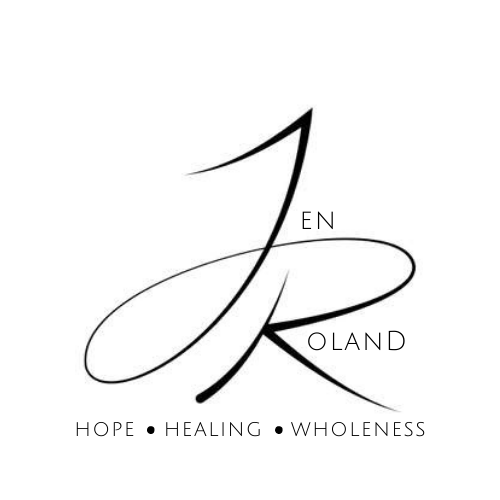by Kate Bartley
I sat next to my husband in the movie theatre, leaning my face into my left hand to block the tears that were streaming down my cheeks. I was embarrassed by them, but couldn’t make them stop. It wasn’t a sad scene where it would be expected for an emotional woman like me to get a little teary. It was the movie La La Land; happy, upbeat, filled with music and dancing… and a woman following her heart. Something about seeing her sitting and writing by an open window triggered a longing inside of me that I had buried deep. When it was brought to the surface it pulled the associated memories of pain and rejection up with it. With the emotions, came the previously wired in thought,” I can not do what I long to do.”
To those around me, I was fine, but if someone asked me to rate my pain that day on a scale of 1-10, I would have said 20. There was no blood; no outward bruises or broken bones, just the deep ache that comes from a neglected soul.
We tried to go out to eat after the movie, but the tears just kept coming. My husband ordered take out and we headed home where I finally stood at the kitchen counter with eyes downcast like a child called to the principals’ office, and admitted my truth out loud. I felt called to write, but didn’t feel like I had permission. I had been unable to express my desires as it felt prideful, self indulgent, and embarrassing, so I did what most of us do, I repressed them.
Today I have a new perspective on emotions and I’m learning to give them a voice. When we give our emotions permission to speak they can be used as tools for our transformation.
Here are a few ways you can start doing this today:
1. Learn to harness the power of your emotions.
Emotion means ‘to be moved; to move out and excite.’ Our emotions MOVE us. They call us to action and attention. They are ENERGY IN MOTION. I love this! I’m a Physical Therapist, so I’m all about movement. When I study scripture I highlight the action verbs.
We are wired to move and our emotions are what jump start us. Without them we would just sit around like cold and indifferent robots.
Imagine being at your child’s ball game and not moving when they hit the ball. Imagine not reacting when they trip over the plate rounding first or when they collide with another outfielder. Without our emotions, we would be lifeless; heartless; unmoved. When we harness the power of our emotions, we can use them to energize our lives and propel our mission.
I always start my coaching session asking my client’s “What’s going well?” Why? Because, when we intentionally look for the good around us and choose to find celebration in the midst of our struggles it creates the energy and momentum needed for change. When we are exhausted and stressed to the max, there’s not enough energy to even contemplate trying to change our patterns. If we want to learn to use our emotions as a tool for transformation, the first step is to create the energy required to do the deeper change work. We can do this through nutrition and exercise as well, but I think it’s pretty amazing that God created us with the capacity to energize ourselves with our minds!
2. Understand the positive intentions of our emotions.
Their primary reason for eliciting action and excitement is to help us survive. The brain does this in two ways: it seeks pleasure and resists danger. We are wired for both. This is why we reach for sugar, Netflix, and anything that makes us feel good, and why we avoid discomfort at all costs.
Our brain fights to keep our basic needs intact. Maslow’s law defines these as love, safety, and belonging. If we think one of them is in jeopardy, we will react to guard them. The job of the emotions is to predict what is about to happen, search our memories and past experiences to make meaning from the external information coming in, and then send messages to the body to act accordingly.
If we see a bear, we pull up all we’ve learned about bears and form a thought, “Danger. That bear can mutilate you.” Next comes the emotion. Yikes! Fear! Panic! This emotion sends out signals to release the neurochemicals and hormones to tell our body what to do. The sympathetic nervous system is turned on, cortisol and adrenaline are released, and messages are sent to the body to get it’s butt in gear and start running for dear life. This is great when we are in danger, but the problem is we often perceive something is at risk when it really isn’t. Our assumptions and past experiences can keep us trapped in survival mode. Our brain doesn’t know the difference between a real threat and a perceived one.
When we are rushing through our day and moving at warp speed, our brain thinks we are running from a bear so it turns off our parasympathetic nervous system which is responsible for regulating our breathing, our heart rate, and our digestion, not to mention signaling the release of all our feel good chemicals that help us feel calm.
When we don’t take the time to slow down and check our emotions and make sure the threat is real, we operate from a reactionary state. We will survive, but we’ll never thrive.
God did not intend for us to function from our primitive brain, or act in our flesh without checking in with our higher reasoning centers and our spirit. In Gal. 5:19-21, Jesus implores us to “Walk by the spirit,” and be careful not to respond in the flesh. He warns us that our emotions, when separated from the spirit, lead to all kinds of acts of flesh. Sin is simply functioning from those protective instincts or using our primitive brains.
Here’s where we’ve got to get educated about our design instead of shaming and blaming ourselves and others for our emotional responses. When we can understand that there is a positive intention to our anger, frustration, fear, overwhelm and even our repression, then we can begin using our emotions as a tool to our spiritual growth.
This is when we say thank you to our brains for their concern, but then remind them…
Jesus died so I could LIVE and THRIVE, not just survive.
Make a conscious choice to direct them and connect them.
Connect with truth and remind yourself that your basic needs are not in jeopardy. They have all been met in Christ.
When emotions are not connected with reasoning , insight, or spirit led, they can cause us to act impulsively, make false assumptions and sabotage our ability to thrive. This impacts our health, our relationships, and every areas of our life.
The emotion is not the problem. The lack of connection is the problem.
3. Understand the role your emotions play in your physical health
Have you ever had butterflies in your stomach before getting up to speak? Do you start sweating during the presentation? This is a classic example of how what we are thinking and feeling in a situation creates a physiological response.
Our physical symptoms like tension, chronic inflammation, digestive pain, heart palpitations, and even excess weight are often our body’s attempt to shout louder when we’ve ignored the messages of our soul.
Every time we ruminate on negative emotions, we send signals to release neurochemicals like cortisol which not only fatigue our adrenals and create hormone imbalance, but can actually turn on/off genes in our body for disease.
Repressing emotions can also block the flow of health in your body. When we hold onto negative emotions, we actually build physical structures in our brains that can be toxic and set up inflammatory processes that make us more vulnerable to disease.
It took thyroid cancer, two trips to the ER, a cardiac ultrasound, ovarian cysts, and an oophorectomy that sent me into surgical menopause to realize that we have to go deeper if we want to find healing.
Medical research is finally beginning to show us what I learned firsthand; Emotional health plays a huge role in our physical health. Stress is a factor in 75% of all illness and diseases that people suffer from today. But, here’s the empowering part!
Neuroscientist, Dr Caroline Leaf, states in her book, Switch on Your Brain, “What God has empowered you to do with your mind is more powerful and effective than any medication, any threat, or any sickness.”
2 Timothy 1:7 reminds us we “do not have a spirit of fear, but of love, power and a sound mind.”
The mind controls the brain and the brain controls the body.
If we can begin pausing to check our emotions and learn to relax and lower our defenses we can help prevent and decrease our susceptibility to many lifestyle diseases.
4. Trace the emotion back to the thought.
There is a reason scripture shouts for us to “take captive our thoughts” and “renew our minds.” Our emotions are not simply reactions from external stimuli like the image of the woman writing in the movie that triggered me to tears. They are created by the thoughts we have about the image.
Our emotions are a state of mind created by our thoughts. We think first, and then we feel. Then we act.
This is super important to be aware of! It’s not the emotion that is the problem. It’s just responding to our thoughts and assessment of the situation. Let me give you an example:
When I see my husband’s lack of facial expression when I start to tell him about my day, my brain goes to work predicting what that means and uses past experiences or memories that have been wired in to pull up information to make a guess about what his “apparent” apathy means. Then I form a thought, as you already noticed, “he must not care about what I did today.” Guess what happens next? My thought triggers the emotions… sadness, hurt, rejection, frustration. From that place of rejection, an action is triggered. I don’t know about you, but when I feel rejected, I withdraw. I sulk. Then I get bitter. Our actions always lead to our results. What do you think the result is when I pull away and get bitter? My husband is probably not going to have any desire to sit down next to me and ask me about my day! This is an example of how our thoughts, and therefore, our emotions dictate our results.
If we can learn to press pause and notice the emotion (e.g. rejection), we can learn to assess it by going back to the original thought that preceded it. In other words, ‘take our thoughts captive.’ I grew up memorizing this verse (2 Corinthians 10:5) and learned the importance of thinking on what was good and true, but I don’t think I ever really understood the implications and the seriousness of making this a spiritual practice – like not just during a morning quiet time but throughout the day.
Once you take the thought captive, try asking a few of these questions.
- Is this true?
- Can it be proven in a court of law?
- Am I making an assumption?
- What is the story I’m telling myself here?
I have several tools I use with my clients to help them learn the power of renewing their minds. One of my favorites is the Daily Emotion Check In, designed to help you use your emotions as a tool for transformation.
If we can change our thoughts, we can change our life!
“You can not control the events and circumstances of your life, but you can control your reactions.” – Dr. Caroline Leaf
5. Give your negative emotions a voice
The ability to direct one’s mental energy in a positive direction can be essential for emotional health. Learning to counteract the demoralized feeling when things don’t go our way, or find value and meaning in the face of loss are characteristics of emotionally healthy people, but according to Psychology Today playing Pollyanna’s ‘The Glad Game’ and searching for something to be glad about in the face of a challenge may not always be what one needs.
True emotional and mental health requires one to accept, process, and respond to things that are not always pleasant or positive.
Negative emotions are part of the human experience. Running away from them just because they don’t feel good does not support true well-being. There’s a distinct difference between choosing to focus on the positive and ignoring the unpleasant.
A negative emotion may be a cue that there is something out of alignment – something needs attention. These emotions help us evaluate experiences and make decisions based upon those evaluations just as much as positive ones do. No one likes to feel sad or angry, but when we give our emotions permission to speak they begin to lose their power.
One of the best ways to do this is through a journal or a letter. Just let the fear, the worry, the loneliness talk to you. Ask it what it needs. Then after you’ve processed through it on your own, ask God if he wants to chime in and shed light on anything. Then you’re ready to tell someone else what you discovered.
Emotions are God-given and a beautiful part of what makes us human. When we can begin seeing them as neither good nor bad, but simply as internal messages designed to inform us, then we can learn to not only walk in health and wholeness, but find freedom to be who God made us to be.
Call to Action: If you’re going through a season, chances are your emotions are reflecting the “inner story” you are telling yourself about your pain. To enable our anger, frustration, disappointment, and anxiety to become tools for positive transformation, we have to replace our internal narrative, which is often not true, with the Word of God. Click here to download 10 Lies We Believe About Pain & the Scriptural Truths to Replace Them. What lie do you struggle with most? How can meditating on the truth of God help you change the way you think, and, in turn, change the way you feel?

About the Author: Kate Bartley is a Physical Therapist and Health and Life Coach. She is passionate about helping women walk in wellness and find freedom to move in their purpose. She has learned firsthand that often means digging deep and getting to the root cause of what is blocking us from moving forward. When she looks back on her seasons of health crisis, she can see clear patterns of emotional stress that preceded them. Having the courage to finally speak her truth and tell her husband what she was feeling was a turning point for Kate that started her on a path to renewed health. Today she proclaims, ‘It is well with my soul!’
If you are looking for a safe space to talk about what’s not going well and are ready to harness the power of your emotions as a tool for transformation, Kate would love to walk alongside you and help you uncover what’s keeping you stuck. You can connect with her @She Walks In Wellness.






3 thoughts on “Using our Emotions as Tools for Transformation”
This is so powerful and well written. Sharing!